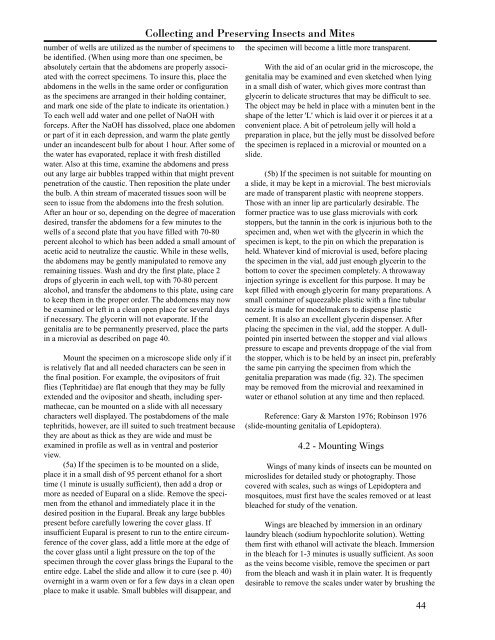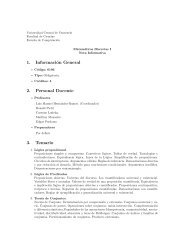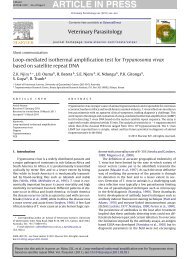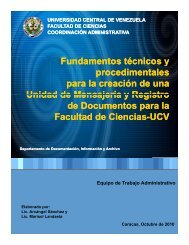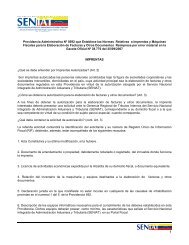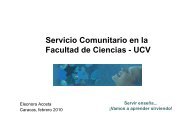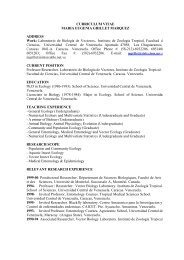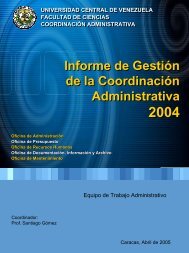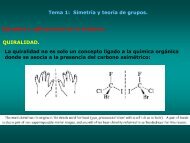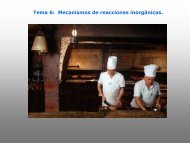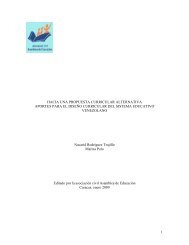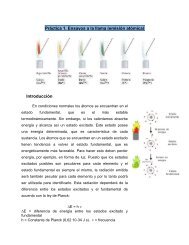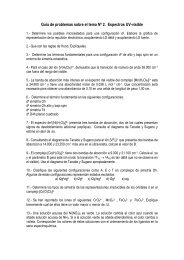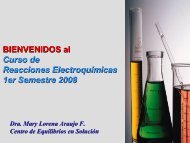Collecting and Preserving
Collecting and Preserving
Collecting and Preserving
- No tags were found...
Create successful ePaper yourself
Turn your PDF publications into a flip-book with our unique Google optimized e-Paper software.
number of wells are utilized as the number of specimens tobe identified. (When using more than one specimen, beabsolutely certain that the abdomens are properly associatedwith the correct specimens. To insure this, place theabdomens in the wells in the same order or configurationas the specimens are arranged in their holding container,<strong>and</strong> mark one side of the plate to indicate its orientation.)To each well add water <strong>and</strong> one pellet of NaOH withforceps. After the NaOH has dissolved, place one abdomenor part of it in each depression, <strong>and</strong> warm the plate gentlyunder an inc<strong>and</strong>escent bulb for about 1 hour. After some ofthe water has evaporated, replace it with fresh distilledwater. Also at this time, examine the abdomens <strong>and</strong> pressout any large air bubbles trapped within that might preventpenetration of the caustic. Then reposition the plate underthe bulb. A thin stream of macerated tissues soon will beseen to issue from the abdomens into the fresh solution.After an hour or so, depending on the degree of macerationdesired, transfer the abdomens for a few minutes to thewells of a second plate that you have filled with 70-80percent alcohol to which has been added a small amount ofacetic acid to neutralize the caustic. While in these wells,the abdomens may be gently manipulated to remove anyremaining tissues. Wash <strong>and</strong> dry the first plate, place 2drops of glycerin in each well, top with 70-80 percentalcohol, <strong>and</strong> transfer the abdomens to this plate, using careto keep them in the proper order. The abdomens may nowbe examined or left in a clean open place for several daysif necessary. The glycerin will not evaporate. If thegenitalia are to be permanently preserved, place the partsin a microvial as described on page 40.Mount the specimen on a microscope slide only if itis relatively flat <strong>and</strong> all needed characters can be seen inthe final position. For example, the ovipositors of fruitflies (Tephritidae) are flat enough that they may be fullyextended <strong>and</strong> the ovipositor <strong>and</strong> sheath, including spermathecae,can be mounted on a slide with all necessarycharacters well displayed. The postabdomens of the maletephritids, however, are ill suited to such treatment becausethey are about as thick as they are wide <strong>and</strong> must beexamined in profile as well as in ventral <strong>and</strong> posteriorview.(5a) If the specimen is to be mounted on a slide,place it in a small dish of 95 percent ethanol for a shorttime (1 minute is usually sufficient), then add a drop ormore as needed of Euparal on a slide. Remove the specimenfrom the ethanol <strong>and</strong> immediately place it in thedesired position in the Euparal. Break any large bubblespresent before carefully lowering the cover glass. Ifinsufficient Euparal is present to run to the entire circumferenceof the cover glass, add a little more at the edge ofthe cover glass until a light pressure on the top of thespecimen through the cover glass brings the Euparal to theentire edge. Label the slide <strong>and</strong> allow it to cure (see p. 40)overnight in a warm oven or for a few days in a clean openplace to make it usable. Small bubbles will disappear, <strong>and</strong><strong>Collecting</strong> <strong>and</strong> <strong>Preserving</strong> Insects <strong>and</strong> Mitesthe specimen will become a little more transparent.With the aid of an ocular grid in the microscope, thegenitalia may be examined <strong>and</strong> even sketched when lyingin a small dish of water, which gives more contrast thanglycerin to delicate structures that may be difficult to see.The object may be held in place with a minuten bent in theshape of the letter 'L' which is laid over it or pierces it at aconvenient place. A bit of petroleum jelly will hold apreparation in place, but the jelly must be dissolved beforethe specimen is replaced in a microvial or mounted on aslide.(5b) If the specimen is not suitable for mounting ona slide, it may be kept in a microvial. The best microvialsare made of transparent plastic with neoprene stoppers.Those with an inner lip are particularly desirable. Theformer practice was to use glass microvials with corkstoppers, but the tannin in the cork is injurious both to thespecimen <strong>and</strong>, when wet with the glycerin in which thespecimen is kept, to the pin on which the preparation isheld. Whatever kind of microvial is used, before placingthe specimen in the vial, add just enough glycerin to thebottom to cover the specimen completely. A throwawayinjection syringe is excellent for this purpose. It may bekept filled with enough glycerin for many preparations. Asmall container of squeezable plastic with a fine tubularnozzle is made for modelmakers to dispense plasticcement. It is also an excellent glycerin dispenser. Afterplacing the specimen in the vial, add the stopper. A dullpointedpin inserted between the stopper <strong>and</strong> vial allowspressure to escape <strong>and</strong> prevents droppage of the vial fromthe stopper, which is to be held by an insect pin, preferablythe same pin carrying the specimen from which thegenitalia preparation was made (fig. 32). The specimenmay be removed from the microvial <strong>and</strong> reexamined inwater or ethanol solution at any time <strong>and</strong> then replaced.Reference: Gary & Marston 1976; Robinson 1976(slide-mounting genitalia of Lepidoptera).4.2 - Mounting WingsWings of many kinds of insects can be mounted onmicroslides for detailed study or photography. Thosecovered with scales, such as wings of Lepidoptera <strong>and</strong>mosquitoes, must first have the scales removed or at leastbleached for study of the venation.Wings are bleached by immersion in an ordinarylaundry bleach (sodium hypochlorite solution). Wettingthem first with ethanol will activate the bleach. Immersionin the bleach for 1-3 minutes is usually sufficient. As soonas the veins become visible, remove the specimen or partfrom the bleach <strong>and</strong> wash it in plain water. It is frequentlydesirable to remove the scales under water by brushing the44


